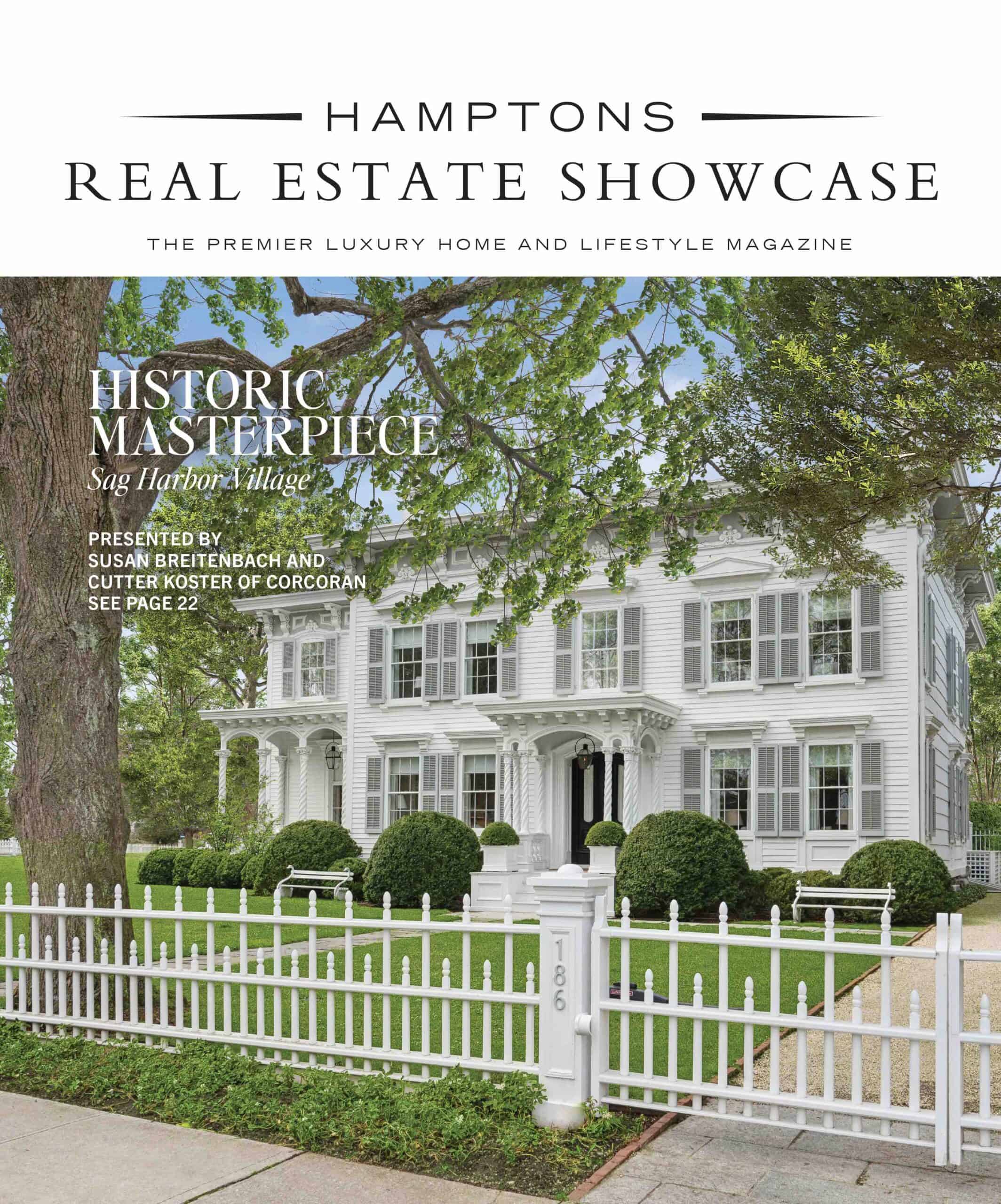What could be the connection between the Canoe Place Inn in Hampton Bays, Claudio’s in Greenport, East Quogue’s Stone Creek Inn and Tweed’s Restaurant in Riverhead? Each of these storied East End foodie institutions were once illegal speakeasies during Prohibition, procuring, distributing, and serving illegal liquor.

The East End of Long Island played an interesting role in the history of Prohibition in the United States. The temperance movement — the movement towards limiting or prohibiting the sale and consumption of intoxicating beverages and liquors — took firm footing on the East End early in the 19th century. Leaders of the Presbyterian Church, meeting in Aquebogue in 1811, adopted a pastoral position supporting temperance; the non-sectarian Sag Harbor Temperance Society was formed in 1829 with the goal of banning the sale of all “ardent spirits”. The Sag Harbor Temperance Society was thereafter joined by the Total Abstinence Temperance Society in 1838 and the Young Men’s Total Abstinence Temperance Society in 1841. By mid-century, close to 25 percent of the population of Sag Harbor supported temperance.
Temperance societies sprung up across the United States, many faith-based with enormous political power and influence. Prohibition became the law of the land in January 1919 when Congressman Andrew J. Volstead, backed by evangelicals and temperance reformers, introduced the 18th Amendment to the U.S. Constitution (often called the “Volstead Act”), which defined intoxicating liquors as any beverage containing more than one-half of one percent alcohol.

Enter the rumrunners, bootleggers and lawbreakers, smuggling liquor from ocean-going supply vessels waiting in international waters just three miles off the East End shoreline (later changed to 12 miles). Small, fast boats called rumrunners (often owned and operated by local fishermen and farmers) would race out to these supply vessels, load up whatever they could carry and head for the East End’s numerous bays and coves while often evading the Coast Guard, police, and other law enforcement officials. The smuggled booze was sent on by waiting truck to New York City or transferred by secret doors to some of the more famous East End speakeasies.

Local lore claims that Claudio’s, standing on stilts over the waters of Greenport Harbor, had a secret door in the floor of the kitchen. Bootleggers boated in under the building and passed the liquor through the trap door, some of which was served in the upstairs speakeasy, with its peephole and secret password. Similarly, the Canoe Place Inn of Hampton Bays boasted secret trapdoors and subterranean tunnels for hiding liquor. In July 1921, a major fire destroyed the Canoe Place Inn; it was reconstructed in 1923 and remained a favorite destination throughout the rest of Prohibition. Likewise, the Stone Creek Inn (originally the Ambassador Inn) located in East Quogue was a popular speakeasy, its location on a remote creek making it a perfect location for receiving illegal hooch. The speakeasy inside Riverhead’s J.J. Sullivan Hotel — now the site of Tweeds Restaurant & Buffalo Bar — was reportedly never raided, as it was frequented by Tammany Hall leader “Boss Tweed” and his cronies. The speakeasy was hidden behind a barber shop operating on the first floor of the building. Liquor was moved through a series of trapdoors and dumbwaiters to the waiting patrons.








![Join us May 6th at The Harmonie Club for the Spring Salon Luncheon, a beautiful gathering in support of a truly meaningful cause. Together, we’ll raise critical funds and awareness for @campgoodgriefeeh—@eastendhospice’s summer bereavement camp helping children and teens navigate loss with compassion, connection, and healing. [link in bio]](https://hamptonsrealestateshowcase.com/wp-content/uploads/sb-instagram-feed-images/491527001_18506092897030135_3117653411609489602_nfull.webp)
![Welcome to this exquisite custom-built home in the prestigious Quogue South estate section, just moments from Dune Road and some of the world’s most breathtaking ocean beaches. Completed in 2024, this expansive shingle-style residence offers 6 beds, 7 full and 2 half baths, a separate legal guest cottage, heated gunite saltwater pool with spa, all set on a beautifully manicured 0.74± acre lot. Represented by @lauren.b.ehlers of @brownharrisstevens. [link in bio]](https://hamptonsrealestateshowcase.com/wp-content/uploads/sb-instagram-feed-images/491516869_18505931593030135_4655757731678000577_nfull.webp)
![Discover 11 Oyster Shores, a unique marriage of thoughtful design, uncompromised execution and meticulous craftsmanship expressed across nearly 6,000± sq. ft. of highly curated living space. Brought to life under the watchful eye of Blake Watkins, the visionary behind WDD, the project is a refreshing departure from the ordinary. Represented by @nobleblack1 of @douglaselliman. [link in bio]](https://hamptonsrealestateshowcase.com/wp-content/uploads/sb-instagram-feed-images/491440257_18505740808030135_9064730571228880657_nfull.webp)
![Reserve your ad space now in the Memorial Day “Summer Kick-Off” Issue of #HRES! 🍋 Be seen by high-end buyers and sellers across the Hamptons, Manhattan, and South Florida—just in time for the start of the season. Secure your spot today and make waves this summer 🌊☀️ [link in bio]](https://hamptonsrealestateshowcase.com/wp-content/uploads/sb-instagram-feed-images/491441694_18505573426030135_4475989184561040528_nfull.webp)

![Tuesday, April 15, was Tax Day for most, but for someone in Palm Beach, it was closing day! The nearly 8,00± sq. ft. Mediterranean-style residence at 240 N Ocean Boulevard, with direct ocean views and a private, 100-foot beach parcel, closed at exactly $26,670,750. The seller was represented by Jack Rooney of @douglaselliman and Elizabeth DeWoody of @compass while Dana Koch of @thecorcorangroup brought the buyer. [link in bio]](https://hamptonsrealestateshowcase.com/wp-content/uploads/sb-instagram-feed-images/491445351_18505056166030135_4907944420436119099_nfull.webp)
![Previously featured on our 2024 Columbus Day issue cover, 74 Meeting House Road has officially sold! This stunning new construction in Westhampton Beach offers the perfect blend of thoughtful design and timeless style. Congratulations to @kimberlycammarata of @douglaselliman who held the listing! [link in bio]](https://hamptonsrealestateshowcase.com/wp-content/uploads/sb-instagram-feed-images/491441951_18504901357030135_2664904795600183799_nfull.webp)
![Located South of the highway in Southampton this 4 bedroom, 5.5 bath multi-story property, offers extensive exterior architectural detail throughout. 60 Middle Pond Road offers breathtaking views and tranquil living, nestled along the serene shores of Middle Pond and Shinnecock bay. Represented by @terrythompsonrealtor @douglaselliman. [link in bio]](https://hamptonsrealestateshowcase.com/wp-content/uploads/sb-instagram-feed-images/491451873_18504686110030135_5284427082339135969_nfull.webp)
